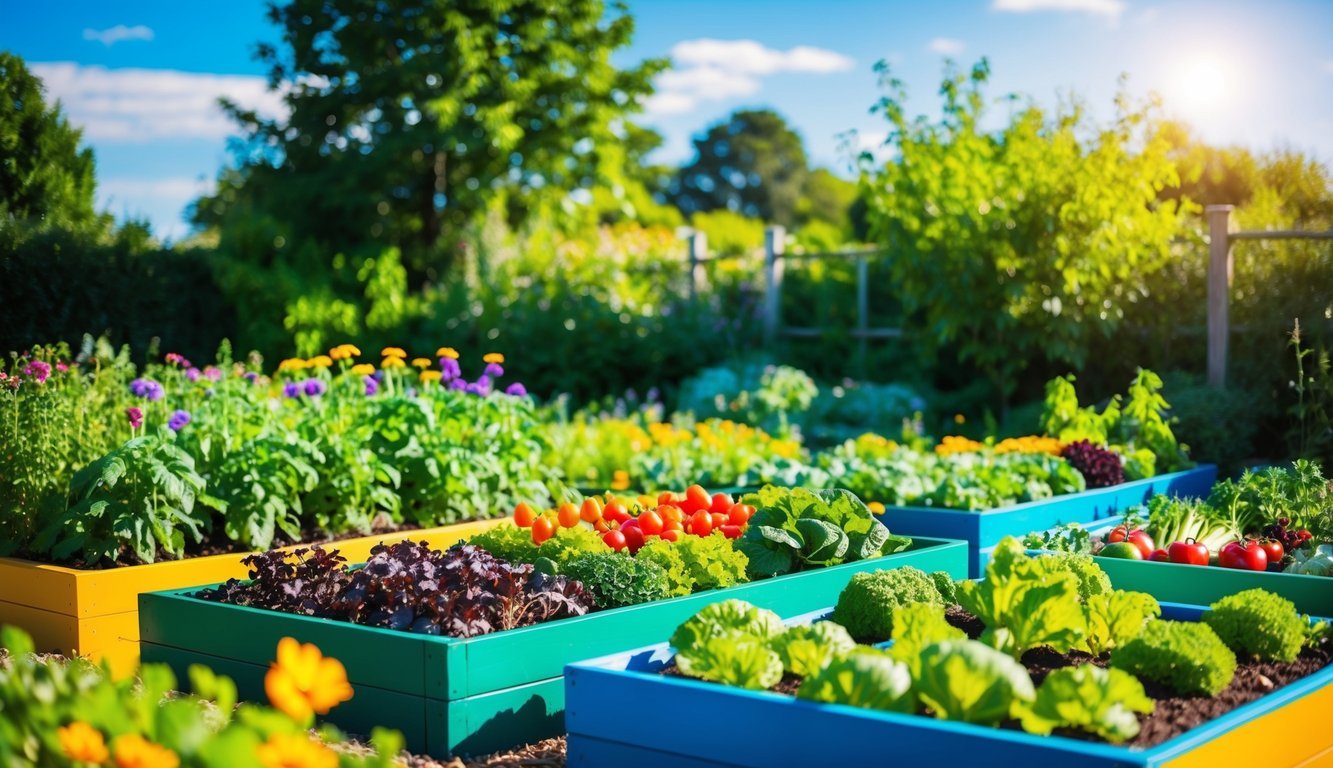
Raised garden beds provide numerous advantages, enhancing not only your garden’s productivity but also helping to navigate common gardening dilemmas.
If you’re looking to kick off a brand-new garden or expand an existing one with raised beds, expert insights from Katherine Rowe can guide you in determining just how many you’ll need to achieve your gardening goals throughout the seasons.
Introducing raised beds into your gardening strategy can revolutionize challenging spaces—be it small patches, areas plagued by poor soil, spots with drainage issues, or even places without any soil at all.
They serve as an excellent solution for growing a diverse range of plants, including fruits, vegetables, herbs, and decorative flowers, efficiently maximizing your production capacity.
Important Factors to Consider
Before diving into construction, take time to reflect on your gardening goals.
Common aspirations may include:
- Producing food for personal use
- Growing items for sale
- Boosting your fresh produce intake
- Cultivating favorite herbs and vegetables
- Raising cut flowers or ornamental plants to entice pollinators
Clarifying these objectives sets a solid foundation for your planning.
Also, consider the materials for your beds and the level of maintenance you’re willing or able to commit—more beds could mean more upkeep.
Establishing Clear Goals
Think about your spatial needs based on what you and your family prefer to eat.
Many people enjoy having fresh vegetables at hand, as they can elevate meals and offer the satisfaction of homegrown quality.
If you’re new to gardening or adding raised beds to an existing setup, starting with just one or two beds can be a great way to learn and adapt to your gardening style.
As a general guideline, establishing about eight beds, each sized four feet by six feet, should be ample for significant harvests.
Remember, raised beds can be tailored to fit different production scales.
Don’t hesitate to get creative with containers, hanging planters, or even in-ground plantings to make the most of your available area.
Making the Most of Location and Scale
When deciding where to place your raised beds, consider sunlight exposure and proximity to water.
Most herbs, vegetables, and flowering plants thrive in full sun, ideally soaking up at least six hours of direct sunlight daily for healthy growth.
Accessibility to water is also vital since raised beds tend to dry out more quickly than traditional plots.
Whether you opt for hose watering or choose to set up a drip irrigation system, having water nearby is essential.
Also, make sure that the ground is prepared and leveled, with pathways cleared for easy access.
The dimensions of your raised beds matter.
Aim for a width of at least four feet so you can comfortably reach all sides.
Soil depth is crucial as well; while six inches is usually sufficient for annual flowers and herbs, many vegetables and perennial plants thrive better with 18 to 24 inches of soil.
What you wish to grow will heavily influence how many beds you need.
Picking plants that you’ll truly enjoy is key to optimizing your limited space.
Plus, think about companion planting, as selecting flowering plants can draw in pollinators and beneficial insects to enhance your garden’s health.
Consider using tools like Epic Garden’s Garden Planner, which can simplify the decision-making process around your bed needs.
This tool will factor in dimensions, creative layouts, and even your local climate to streamline your planning.
Creating a simple diagram can be invaluable for organizing your raised bed layout.
Use a scale to measure your space, allowing each square on your grid to represent one square foot.
This visual will help you estimate how many crops you can fit into your arrangement.
Raised beds offer abundant opportunities for proper plant spacing and root development.
Think about using vertical gardening strategies or other efficient layouts to boost your yield.
Techniques like square-foot gardening can also help you fully utilize every inch of space.
By implementing these strategies, you can create a productive and enjoyable raised bed garden that aligns with your unique gardening dreams.
Happy gardening!
Source: Epicgardening

